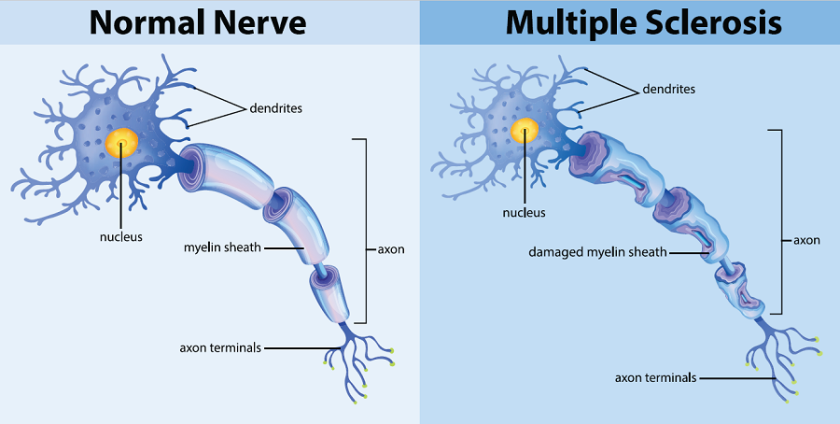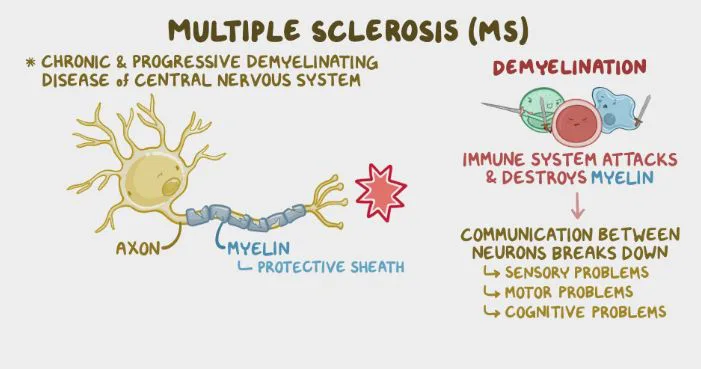
To achieve a holistic understanding of multiple sclerosis, an international team of scientists led by the Department of Medicine and Life Sciences (MELIS) at Pompeu Fabra University, has devised a computational biology instrument. This innovation also holds potential for probing into other intricate illnesses, like various forms of dementia.
Understanding multiple sclerosis is not that easy. It’s an autoimmune condition. In such a situation, the immune system mistakenly attacks the brain and spinal cord. Gaining insights as to why it happens is slightly tricky, as it involves everything, from genes and proteins to cells and tissues, all the way up to the whole body.
When it comes to symptoms also, it’s like a mixed bag. Some people have vision trouble, while other might feel tired all the time, struggle with walking and balance, or even have tingling or weakness in their arms and legs. These symptoms can come and go or stick around for a while.
Crunching Data from More Than 300 People
Recent study published in the journal Plos Computational Biology analyzed a whole bunch of data all at once. The data that was taken into consideration included – genes, proteins, cells, brain and retinal images, and even clinical info from 328 people with multiple sclerosis and 90 healthy subjects.
By crunching all this data together, the researchers converged on how multiple sclerosis works.
Shaking Things up to See What Sticks Together
By looking closely at how close different elements are within each level in each person, the researchers figured out how they connect to each other within their own level and even between levels. Using Boolean dynamics, where each element is either active or inactive, and adding little disturbances to the mix, the team set the elements of the network into motion.
With this way, the researchers pinpointed which elements from various levels are tied together on a biological level, explained Jordi Garcia-Ojalvo, professor of Systems Biology and director of the Dynamical Systems Biology Laboratory at the UPF Department of Medicine and Life Sciences.
MK03: Key Player in Multiple Sclerosis Pathway
Researchers were able to discover a link between the protein MK03, which was already tied to multiple sclerosis, and things like
- total count of T cells
- thickness of the layer of retinal nerve fibers, and
- how quickly someone can walk a short distance
Protein MK03, also known as mitogen-activated protein kinase 3 (ERK1), is crucial for the MAP kinase signal transduction pathway. This pathway is involved in many cellular processes, including cell growth, proliferation, differentiation, and survival.
While, T cells, also known as T lymphocytes, are a type of white blood cell in the immune system that fight off infections.
Although the current study does not envelope the entirety of sclerosis, it could, however, be used as a reliable biomarker for diagnosing and treating multiple sclerosis. Plus, it’s shed light on how proteins, cells, tissues, and behavior all interact, added Garcia-Ojalvo.

Takeaway
The future impact of this research will surely lead to a paradigm shift in multiple sclerosis treatment towards personalized medicine.
Understanding MK03’s role in multiple sclerosis pathway could lead to the development of more accurate diagnostic tools and targeted treatments for the disease. Even its identification as potential biomarker can help in improving outcomes and quality of life for patients with the disease.
As we explore the fascinating links between proteins, cells, tissues, and even behavior, the idea of personalized therapies is starting to feel more real. And for those living with multiple sclerosis, this brings a ray of hope for a better tomorrow.



